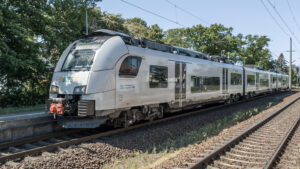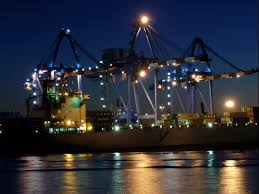Dr. Sanjeevv Khanna, COO, Patanjali Foods, shares critical insights on building resilient cold chains through renewable energy, advanced analytics, and local sourcing—driving sustainability, efficiency, and long-term growth in India’s evolving FMCG landscape

India faces a tipping point where sustainable cold chain development is critical
India’s cold chain stands at a pivotal juncture—fuelled by rising demand, climate shifts, and global trade. Dr. Sanjeevv Khanna shares how smarter, greener, and resilient infrastructure can drive its next leap.
Cold chain
A cold chain refers to the temperature-controlled supply chain essential for the storage, transportation, and distribution of perishable goods such as fruits, vegetables, dairy, meat, seafood, and vaccines. In India, over 30% of food produced is lost before it reaches the consumer due to lack of proper cold storage and logistics. These post-harvest losses not only hurt farmers economically but also contribute significantly to food insecurity and carbon emissions.
With India being one of the largest producers of milk, fruits, and vegetables globally, the potential to scale up cold chain efficiency is immense — but so are the challenges.
Indian cold chain challenges
- Infrastructure Gaps: Many rural areas lack cold storage, with broken cold chains due to poor first-mile connectivity and unreliable power supply.
- Fragmented Supply Chains: Multiple intermediaries, lack of digitisation, and poor integration between storage and transport make the system inefficient and costly.
- Energy Dependence: Most cold storage units rely heavily on diesel-powered refrigeration, contributing to high operational costs and environmental pollution.
- High Capital Costs: Cold chain facilities require significant investment in equipment, insulation, and technology, which deters small businesses and farmers from setting up localised solutions.
Solutions and innovations
India is now at a tipping point where sustainable cold chain development is not a choice but a necessity. Here’s how the sector is adapting:
- Solar-Powered Cold Storage: Innovations like solar cold rooms are enabling rural and off-grid areas to access reliable, eco-friendly refrigeration. These are especially impactful for smallholder farmers.
- IoT and AI Integration: Real-time monitoring of temperature and humidity using sensors and cloud-based platforms ensures better quality control and minimises spoilage.
- Public-Private Partnerships: Government schemes like PM-KUSUM and the Agriculture Infrastructure Fund are encouraging investments in cold chains, while private players are increasingly entering the space with smart logistics solutions.
- Multi-modal Logistics: Integrating rail, road, and air transport with cold storage hubs improves efficiency and reduces transit time for perishable goods.
- Localised Cold Chain Hubs: Decentralised mini cold storage units closer to the farm gate are being promoted to reduce post-harvest loss and increase farmers’ income.
The road ahead
To lead in agriculture exports and vaccine distribution, India must innovate cold chain sustainability through policy support and inclusive growth. A resilient, green cold chain network will be crucial for securing food and health amid urbanisation, climate change, and global trade. In a country where a small change can impact millions, sustaining the cold chain is not just a logistical challenge — it’s a national imperative.











